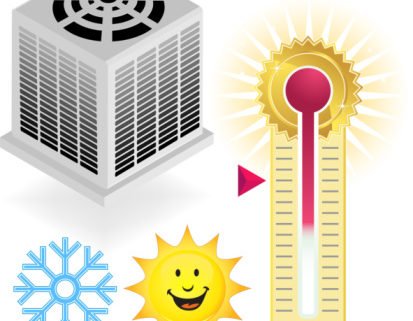How Important Is It To Get The Right Size Of Heating And Cooling Equipment?
When it comes to purchasing heating and cooling equipment for your home, you need to realize that size really does matter. Installing equipment with a capacity that matches the home’s size will decrease energy usage while improving comfort for you and your family.
Home builders these days are constructing more energy efficient homes. The installation of double-pane windows, weather-stripping, insulation and caulking reduce heat gain during the summer and heat loss during the winter. This allows homeowners to purchase and install smaller systems than they needed in the past without sacrificing comfort.
Anyone who thinks bigger is better when purchasing a heating and cooling system should think again. Purchasing something that is too big for the space is the most common HVAC sizing mistake consumers make. An oversize HVAC system will produce large temperature swings making it difficult to maintain comfort. It will not run long enough to remove all the moisture from the air, which makes it feel clammy. In addition to being uncomfortable, high humidity can promote mold growth, which is a health hazard.
Residential Load Calculation is the Manual J method of HVAC sizing created and recommended by the Air Conditioning Contractors of America, or ACCA. Residential Duct Design is the Manual D method of HVAC sizing used when the system includes ducts.
Both manuals take into account a variety of factors that affect a home’s requirement for heating and cooling. These factors include the number of occupants, climate, house size, house shape, roof surface color, which way the house is oriented, air infiltration rates, the types of home appliances and lights giving off heat and ceiling, window and floor area.
An experienced estimator will calculate room volumes, estimate air leakage and check the R-value of the insulation. The process should include inspecting the condition of seals and insulation as well as duct distribution in a forced air system. The contractor should provide a written estimate for sizing the system, a contract and a written warranty on labor and equipment.
Purchasing the right size HVAC system is the best way to ensure your home is energy efficient and comfortable year round.
Follow us for access to more great articles on heating, air conditioning and home needs.




